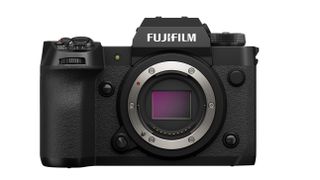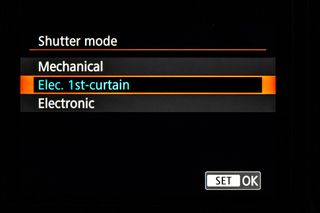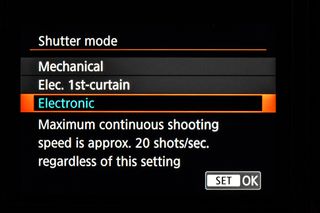What are the pros and cons of electronic shutters on cameras?
Even though SLR cameras adopted digital image sensors as far back as the 1980s, other key components have remained defiantly mechanical. Mirrorless cameras removed the mirror and optical viewfinder components, of course - but some models have gone even further by offering an electronic shutter. Right now, most of these cameras provide both mechanical and electronic shutters, because the technology that enables the latter is still maturing.
But while electronic shutters aren't perfect, they offer important and worthwhile advantages. Of course, whether these benefits apply to your photography is another matter.
Pros of electronic shutters
They're silent: Soundless shooting is a big benefit in sensitive situations such as weddings, stage performances and wildlife photography. A few models let you set a shutter noise if you prefer a 'click'.
They're vibration-free: With no mechanics to worry about, electronic shutters are totally vibration-free, which reduces the risk of camera shake.
You get super-rapid shooting: Mechanical shutters, where there is a chain of events when the shutter button is pressed, will have a top shooting rate of between 10 and 15fps.
Electronic shutters can deliver shooting rates of 20fps and above.
They have faster shutter speeds: The fastest mechanical shutter speed is 1/8,000 sec. By comparison, many electronic shutters go to 1/32,000 sec and beyond. The fastest speed currently available is the 1/180,000 sec found on Fujifilm's X-H2[1], launched in 2022.
There's no wear and tear: A mechanical shutter will be engineered to give a minimum number of actuations - the Canon EOS R5[2] is rated at 500,000 cycles, for example.
With no moving parts, an electronic shutter should last much longer.

Cons of electronic shutters
They can generate rolling shutter distortion: Electronic shutters do not expose the whole frame at the same instant, so with moving subjects, rolling shutter distortion can occur. Top-end mirrorless cameras have fast readouts so it's much less of a problem, but lower-spec cameras can suffer badly, so a mechanical shutter is advised with sports or wildlife photography. The global shutter[3], which will be seen first in the Sony A9 III[4] when it arrives in 2024, will solve this problem
They can create banding: Artificial lighting such as fluorescent lighting flickers.
When you're shooting with an electronic shutter, this may result in banding at faster shutter speeds. If in doubt, shoot at 1/30 sec or slower in these environments.
Most don't sync with flash: Many mirrorless camera electronic shutters do not synchronize with flash at all, so there's no option other than to use the mechanical shutter. But some top-end mirrorless cameras offer flash sync with both types of shutter.
Shutter types explained
Mechanical focal plane shutter

A mechanical focal plane shutter uses two lightproof blinds or 'curtains' that traverse - vertically in most cameras - across the focal plane to make the exposure.
Press the shutter button and the first curtain starts the exposure, followed by the second curtain which ends it. In effect, the two blinds, which travel at the same speed regardless of the set speed, produce a slit - the thinner the slit, the faster the shutter speed. When the slit is wide enough to reveal the entire image sensor, that is the camera's flash sync speed.
Electronic front curtain shutter

Engaging the camera's electronic front curtain shutter (EFCS) option minimizes vibration and noise.
Since mirrorless cameras have no reflex mirror to move before starting the exposure, the EFCS means the exposure starts electronically almost instantly, with the rear curtain ending it. This also keeps shutter lag to a minimum to help time a shot more precisely. With an EFCS, any vibrations created by the rear curtain closing happen after the exposure has ended, so have no consequence.
Electronic shutter

An electronic shutter reads image data from top to bottom, row by row, so there is a fractional time delay, with the result that moving subjects can suffer from rolling shutter distortion.
For example, the wheels of a moving car can look elliptical. Fast electronic shutter speeds can also suffer from banding with some forms of artificial lighting such as fluorescent tubes. Using flash is also an issue and is limited to a few top-end cameras.
This shutter type is vibration-free, silent, has higher top speeds, allows faster continuous shooting and lasts longer.
References
- ^ Fujifilm's X-H2 (www.digitalcameraworld.com)
- ^ Canon EOS R5 (www.digitalcameraworld.com)
- ^ global shutter (www.digitalcameraworld.com)
- ^ Sony A9 III (www.digitalcameraworld.com)